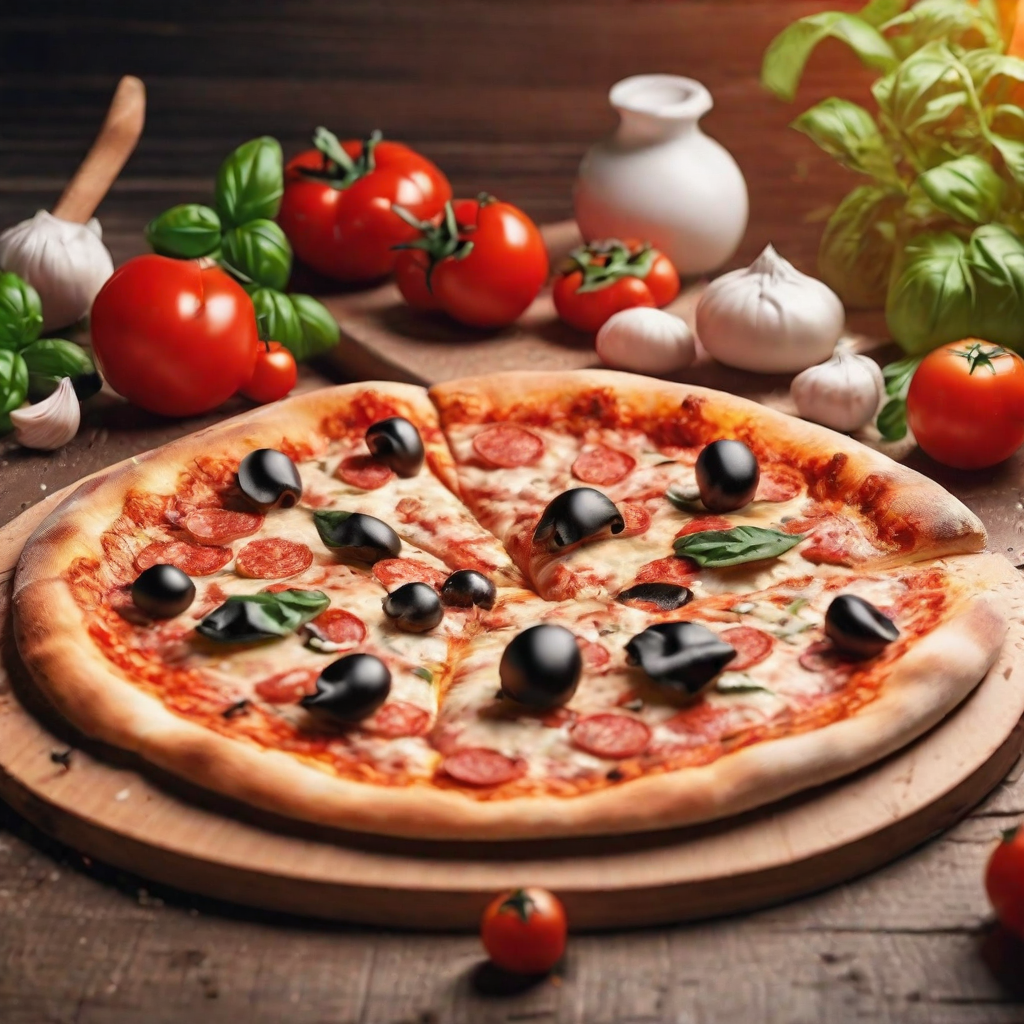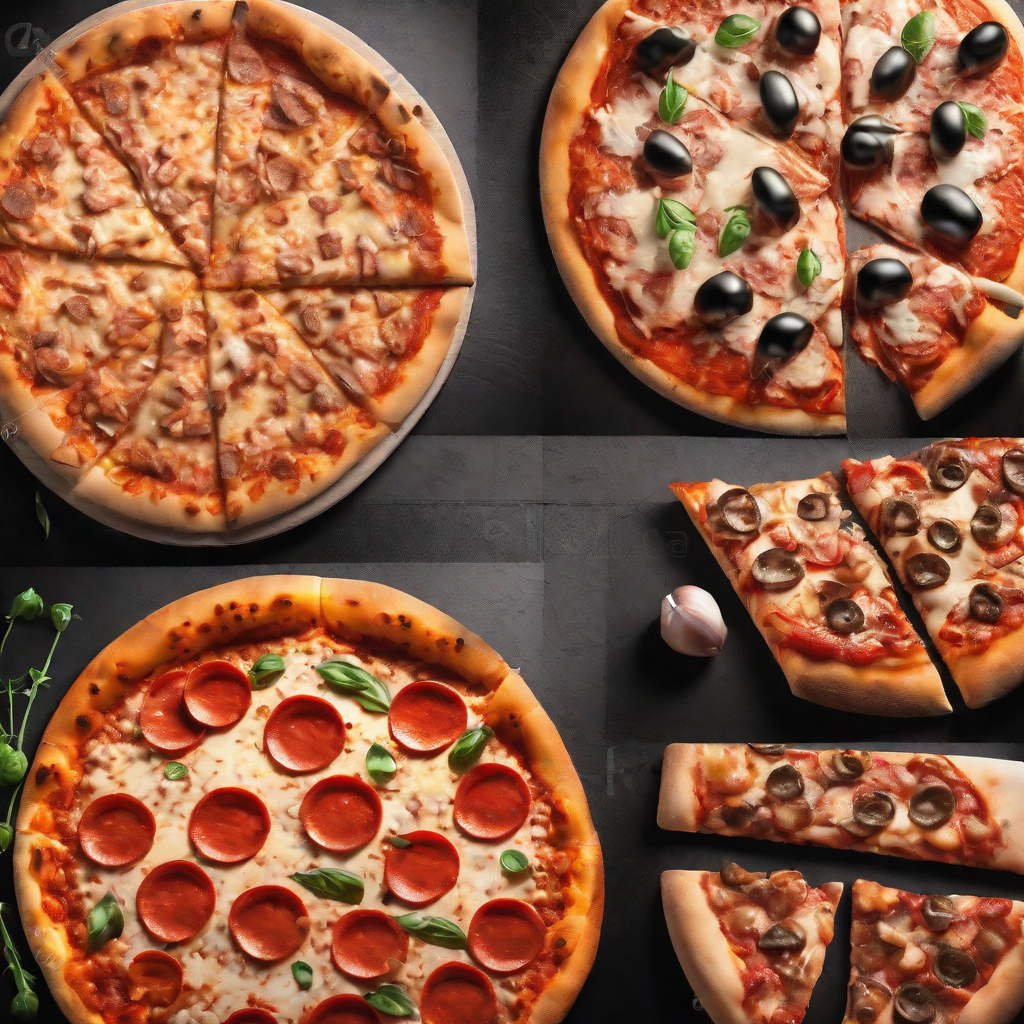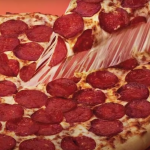Embark on a flavorful journey through the world of pizza, where two culinary titans—Italian and American pizzas—stand in delicious contention. The article titled “Italian Pizza vs American Pizza” serves as your comprehensive guide to understanding the nuances that distinguish these two iconic pizza styles, each a beloved emblem of its culture.
With a rich history stretching back to the cobblestone streets of Napoli, Italian pizza offers a glimpse into the soul of traditional Italian cuisine, characterized by its simplicity, fresh ingredients, and adherence to time-honored techniques. Across the ocean, American pizza represents the spirit of innovation and diversity, a testament to the melting pot of cultures that have shaped the United States, resulting in a variety of styles from the deep-dish of Chicago to the foldable slices of New York.
As experts in the culinary landscape, we delve deep into the origins, ingredients, preparation methods, and regional variations that define Italian and American pizzas. Our exploration is not just a comparison but a celebration of how a simple dish of dough, sauce, and toppings can evolve to reflect the tastes, traditions, and ingenuity of different cultures. This article aims to enlighten pizza aficionados and casual diners alike, offering a fresh perspective on what makes each style unique, while also highlighting the shared passion for pizza that unites food lovers around the globe.
Whether you swear by the thin, crispy crusts and artisanal toppings of Italian pizzas or the hearty, generously topped American variations, this guide promises to deepen your appreciation for both. Join us as we slice into the history, debate the merits, and savor the flavors of Italian and American pizzas, inviting you to look beyond the surface and appreciate the art and science behind each bite. Your culinary voyage into the heart of pizza’s dual identity starts here, promising a journey rich in flavor, tradition, and discovery.
Section 1: The Historical Journey of Pizza
The Origins and Evolution of Italian Pizza
Italian pizza has a rich history that dates back centuries. Its roots can be traced to Naples, where it emerged as a humble street food in the late 18th century. With its simple combination of dough, tomatoes, and cheese, Neapolitan pizza quickly became a local favorite. Over time, different regions in Italy developed their own unique styles, showcasing the country’s culinary diversity.
The Americanization of Pizza
Pizza made its way to the United States through Italian immigrants in the late 19th and early 20th centuries. Initially confined to Italian neighborhoods, pizza gradually gained popularity among Americans of all backgrounds. However, to suit American tastes, certain adaptations were made, leading to the birth of the American pizza style. Thicker crusts, richer toppings, and larger portions became the norm, reflecting the preferences of the American palate.
Section 2: Culinary Showdown: Italian vs. American Pizza
Crust: The Foundation of Flavor
- Italian Pizza: Made with high-quality ingredients and the dough is allowed to sit and rise for three days to make it light and fluffy and traditionally made with “00” flour for a thin, crispy texture.
- American Pizza: Uses different types of flour to create a thicker crust.
Sauce and Cheese: Diverse Tastes
- Italian Pizza: Light sauce made from freshly picked tomatoes and garlic, less spicy. It uses fresh mozzarella di Bufala in scoops for a unique taste.
- American Pizza: Thicker and spicier sauce made with canned tomatoes. It has heavier and cheesier sauces with various toppings.
Toppings: A Tale of Two Tastes
- Italian Pizza: Typically has fewer topping varieties and usually doesn’t include meat.
- American Pizza: Offers a wide range of toppings like olives, anchovies, beef, chicken, pineapples, cherry tomatoes, etc.
Texture: Contrasting Italian and American Pizza Characteristics
- Italian Pizza: Typically has a lighter texture with thinner crusts, is more flavorful, and is made with mozzarella and tomatoes. It is usually eaten for dinner.
- American Pizza: Has a lighter texture, often eaten on the go, with thicker crusts, more cheese, and is more filling.
Baking Techniques: From Brick Ovens to Conveyor Belts
- Italian Pizza: It is traditionally cooked in a wood-fired brick oven, which imparts a distinct smoky flavor and creates the perfect crispy crust.
- American Pizza: American pizza, especially in commercial settings, often utilizes conveyor belt ovens, ensuring consistency and efficiency. However, some pizzerias in the United States have embraced the traditional brick oven method for a more authentic experience.

Analyzing the composition and preparation of Italian and American pizzas illuminates their philosophical differences. Subtle factors in ingredients and techniques manifest in noticeably distinct pizzas.
pizza
| Items | Type | Italian Pizza | American Pizza |
| Dough | Thickness | Thin Crust | Thick Crust |
| Ingredients | Flour, Water, Yeast, Olive Oil | Flour, Water, Yeast, Sugar, Oil | |
| Rising time | Long Fermentation (24-48 hours) | Long Fermentation (24-48 hours) | |
| Cooking style | Wood-fired oven | Conventional oven | |
| Toppings | Quantity | Sparse, high-quality ingredients | Abundant, diverse ingredients |
| Cheese | Mozzarella (primary), occasional Parmesan | Mozzarella (primary), blend of other cheeses | |
| Other toppings | Tomatoes, Basil, Olive Oil | Meat (pepperoni, sausage, etc.), Vegetables (peppers, onions, etc.), Sauces (ranch, barbecue) | |
| Overall | Texture | Chewy, airy crust | Soft, fluffy crust |
| Flavor | Subtle, focused on fresh ingredients | Bold, varied due to multiple toppings | |
| Purpose | Shared as an appetizer or light meal | Eaten as a main course or snack |
See more : How many calories in a slice of cheese pizza? | Nutrition
Additional Notes:
- This is a simplified comparison and does not represent the full diversity of pizzas in both Italy and the US.
- Some Italian pizzas can be thicker and have more toppings, while some American pizzas can be thin and focused on specific flavors.
In summary, Italian pizza emphasizes simplicity, quality, and tradition with lighter textures and fewer toppings. American pizza showcases creativity, variety, heartiness with thicker crusts, more cheese, and an abundance of toppings
You might be interested: how big is a medium pizza
Section 3: Beyond the Pizza: Cultural and Social Dimensions
Dining Experience: Fast Food vs. Culinary Art
In Italy, pizza is seen as a culinary art form and is often enjoyed in a leisurely dining setting. It is common for families and friends to gather at pizzerias, savoring each bite and engaging in lively conversations. In contrast, American pizza has become synonymous with fast food culture, with an emphasis on convenience and speed. Pizza delivery and takeout services are prevalent, catering to the busy lifestyles of Americans.
Pizza in Community and Social Events
Both in Italy and the United States, pizza plays a significant role in community events and social gatherings. In Italy, it is a staple at festivals and celebrations, bringing people together to share good food and good times. In the United States, pizza is a popular choice for casual parties, game nights, and even weddings. Its versatility and crowd-pleasing nature make it an ideal option for large gatherings.
Social Media’s Role in Shaping Pizza Trends
Social media platforms have played a pivotal role in shaping pizza trends in recent years. Influencers and food bloggers share their favorite pizza spots, showcasing unique styles and innovative toppings. Viral pizza challenges and trends, such as the “pizza in a cone” or “pizza fries,” spread like wildfire on social media, influencing pizzerias to experiment with new and exciting creations. Online pizza communities also provide a platform for enthusiasts to discuss their love for all things pizza.
Section 4: The Pizza Economy: A Slice of the Market
The Business of Pizza in Italy and the U.S.
The pizza industry is a significant economic force in both Italy and the United States. In Italy, pizzerias range from small family-owned establishments to Michelin-starred restaurants serving gourmet pizza. The market size is substantial, with pizza consumption deeply ingrained in Italian culture. In the United States, the pizza market is even more expansive, with countless pizzerias, national chains, and takeout/delivery services. The competition is fierce, and pizza has become a multi-billion dollar industry.
Innovations in Pizza Delivery and Technology
The pizza industry has embraced technological advancements to enhance the delivery and ordering experience. Online platforms and mobile apps allow customers to conveniently place orders, customize their pizzas, and track real-time deliveries. Furthermore, some pizzerias have adopted robotic systems for dough preparation and automated pizza-making machines, increasing efficiency and reducing labor costs.
Section 5: Health, Sustainability, and Ethical Considerations
Nutritional Analysis: Comparing Pizza Styles
See more : How Hot Is A Pizza Oven? | Get The Answer Here And Tips
Pizza is often considered indulgent, but its nutritional value can vary depending on the ingredients and preparation methods. Italian pizza, with its thin crust and emphasis on fresh ingredients, tends to be lighter and lower in calories. American pizza, with its thicker crust and generous toppings, can be higher in calories and fat. However, both styles can be enjoyed in moderation as part of a balanced diet.
Sustainability Practices in Pizza Production
As environmental concerns grow, pizzerias are making efforts to adopt sustainable practices. This includes sourcing local and organic ingredients, reducing food waste, and implementing energy-efficient technologies. Some pizzerias have even introduced compostable or biodegradable packaging materials to minimize their ecological footprint.
Adapting to Dietary Trends: Gluten-Free and Vegan Options
With the rise of dietary restrictions and preferences, pizzerias have expanded their menus to accommodate diverse needs. Gluten-free pizza crusts, made from alternative flours like rice or almond, cater to those with gluten sensitivities or celiac disease. Vegan options, featuring plant-based cheese and a variety of vegetable toppings, offer a delicious alternative for those following a vegan lifestyle.
Section 6: The Future of Pizza: Trends and Predictions
Technological Advances in Pizza Making and Delivery
Technological innovations shape the future of the pizza industry. From automated pizza-making machines to drone deliveries, advancements are streamlining the production and delivery processes. Virtual reality dining experiences and personalized pizza recommendations based on customer preferences are just a glimpse of what the future holds.
Preserving Tradition vs. Embracing Innovation
As the pizza industry evolves, there is a delicate balance between preserving traditional methods and embracing innovation. While many pizzerias take pride in their centuries-old recipes and techniques, others are pushing boundaries with unconventional toppings, fusion flavors, and experimental crusts. The key lies in finding a harmonious blend of tradition and innovation to cater to evolving consumer tastes.
Section 7: How to Distinguish Italian from American Pizza
Key Characteristics of Authentic Italian and American Pizzas
Distinguishing between Italian and American pizza relies on key characteristics. Italian pizza emphasizes simplicity, with thin crusts, minimal toppings, and high-quality ingredients. American pizza, on the other hand, boasts thicker crusts, abundant toppings, and a broader range of flavors. These distinctions in crust thickness, toppings, and overall flavor profile are telltale signs of the pizza’s origin.
Case Studies: Iconic Pizzerias That Define Excellence
To exemplify the diversity of pizza styles, we present case studies of iconic pizzerias in both Italy and the United States. From Naples’ legendary pizzerias, such as Da Michele and Sorbillo, to famous American establishments like Lombardi’s in New York City and Pizzeria Bianco in Phoenix, these pizzerias showcase the artistry and craftsmanship behind traditional and innovative pizzas.

Conclusion
In conclusion, Italian and American pizzas have distinct characteristics that reflect the cultural and culinary preferences of each country. The historical journey, culinary showdown, cultural dimensions, market dynamics, health considerations, and future trends all contribute to the enduring appeal of pizza in both cultures. By exploring the nuances of these pizza styles, we hope to inspire readers to appreciate the diversity and enjoy the unique pleasures that each has to offer.

Ronald B Gamrot is the owner of Silverking Brewery, one of the most successful craft breweries in North America. He started the business from scratch in his garage, and it has since grown into a multimillion-dollar operation. Ronald is passionate about brewing delicious beer and providing top-notch customer service. He is a respected member of the brewing community and often speaks at industry events.








Italian pizzas and American pizzas are only similar in name.
There’s a lot of crap in America, but it is possible to have excellent pizza there. And, I’m sure it’s entirely possible to get bad and poorly made pizza in Italy, as well.
I assume it is because of all the high fructose corn syrup that America made pizza appeals to someone not used to the fresh, local and simple ingredients that makes actual pizza so good.
Thank you for sharing your thoughts!
Thank you for sharing your thoughts! It’s always great to hear different perspectives.
I’m glad you liked it! If you have any questions, feel free to ask.